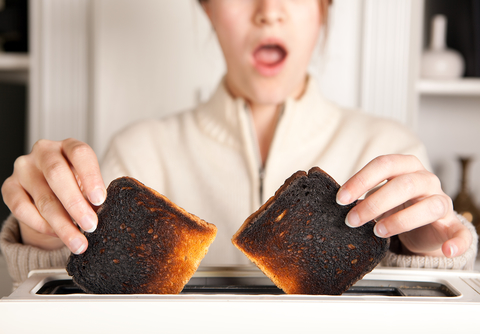In recent weeks and months air pollution is constantly being featured in the news. Diesel vs Petrol, the great VW scandal, threats of increased taxation. However, when we stop and think about it we spend the vast majority of time indoors and out of that we spend a high proportion of it asleep; so are we safe then?
 The Consumer magazine WHICH have carried out some research where they compared air quality in 3 types of homes; a Victorian house, a 1950’s built house and a new build. They carried out day to day activities in each, like washing, ironing, cooking and using everyday scented products in living rooms, bedrooms, bathrooms and kitchens. They took air quality measurements before and after bursts of activity. The results were eye opening. It appears that everyday tasks generate odourless and tasteless gasses including particles that could quite possibly be making affect our well-being!
The Consumer magazine WHICH have carried out some research where they compared air quality in 3 types of homes; a Victorian house, a 1950’s built house and a new build. They carried out day to day activities in each, like washing, ironing, cooking and using everyday scented products in living rooms, bedrooms, bathrooms and kitchens. They took air quality measurements before and after bursts of activity. The results were eye opening. It appears that everyday tasks generate odourless and tasteless gasses including particles that could quite possibly be making affect our well-being!
Surprisingly high levels of air pollutants were found, with potentially cumulative long-term health effects.
Air pollution can be categorised into 3 basic types
Particulate matter
These are tiny particles that come from combustion things like smoking, wood or coal fires and even burning the toast. Even over using tea lights and candles create particulate matter. Particulate Matter is a risk to health and can be a factor which may lead to Lung cancer and heart disease.
Volatile Organic Compounds (VOCs)
are chemicals that originate from scented products such as air fresheners, toiletries and bathroom cleaners. The chemicals evaporate into the air at room temperature forming vapours that we inhale. This vapour can react with the ozone which is found naturally in “fresh” air and can form the gas formaldehyde.
High levels of VOCs can irritate your eyes, your nose and your throat, will give you headaches, make you feel sick and, in the long term, can course damage to kidneys, liver and central nervous system.
Carbon dioxide & carbon monoxide
is made by appliances like gas fires, gas cookers and open fires which emit carbon monoxide (CO) and carbon dioxide (CO2) gases. Carbon monoxide is produced by poorly maintained gas heaters, gas or paraffin heaters. We produce carbon dioxide during our normal breathing and burners that are operating normally make it to. Carbon monoxide can kill! If you have not got a carbon monoxide detector, then please obtain one. Every home should have one at the very least one and this must be correctly located in accordance with the instructions.
Very high levels of CO2 over prolonged periods of time can result in headaches, drowsiness and dizziness and those with lung disease or who have difficulty breathing are highest risk. Is there a solution? The simple answer is, yes!
All houses need good ventilation
Ventilation is measured in air changes per hour (ac/h). Bathrooms and Kitchens need the highest levels of ventilation due to steam production and cooking fumes and omissions. The air change rate in these two rooms should be 2-3 ac/h.
Ventilation findings ac/h (source WHICH?)
One would possibly expect that the energy efficient new builds would be the safest homes, but the WHICH finding demonstrates that all 3 house types fall well below accepted standards for ventilation.
Can it be that up until now we appear to have traded energy efficiency with poor air quality? Making our homes air tight could be generating health problems for future generations.
We see from this research that good ventilation is critical for a healthy home
How Can 1st Bathrooms and Kitchens help?
1st Bathrooms & Kitchens take ventilation seriously and always include adequate ventilation in all bathroom and kitchen designs. When there is more than 1 bathroom in a property and multiple rooms that need to be ventilated we use a whole house ventilation system. The simplest and cheapest option can accommodate inputs from up to 5 rooms.
Contact us for more information.
